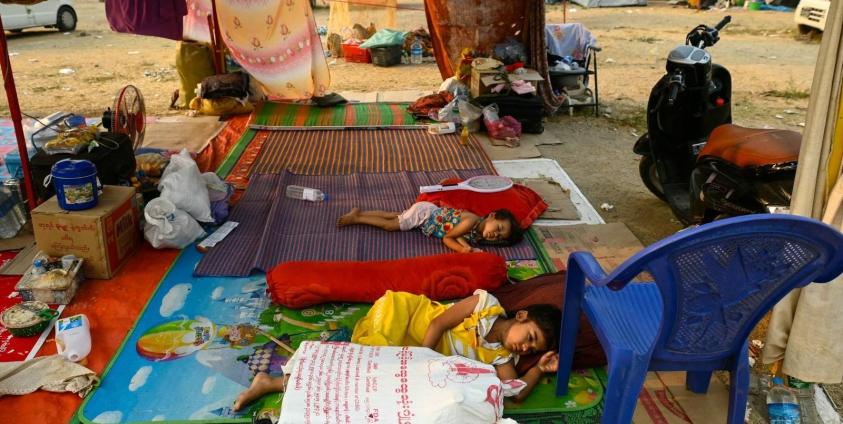Some earthquake-affected areas in Mandalay Region are facing a shortage of toilets, triggering concerned about the spread of diarrhoea and other infectious diseases.
Some earthquake-affected residents in Mandalay Region, which was devastated by the powerful earthquake on 28 March, are currently living in temporary shelters due to the damage to their homes.
Consequently, there are insufficient numbers of toilets for the earthquake-affected population in these temporary shelters, leading to difficulties.
“Since there is no electricity, we cannot run the water pumps. So, we have experienced water shortages. With the lack of sufficient useable water, there are difficulties in using the toilets,” said a person helping earthquake victims in Mandalay.
Locals said that in some areas where buildings collapsed in the earthquake, people are living in temporary tents on the streets and are having to deal with problems resulting from defecation in a haphazard manner due to the lack of adequate toilets.
Recent unseasonal rains in Mandalay, have caused a foul smell of urine and faeces in areas where earthquake evacuees are living with insufficient toilets.
“As people defecate in random places, it dries up in sunny days, but now that it’s raining, the smell of excrement is wafting again, and it’s flowing with the rain. The main problem is that we don’t have access to toilets,” said a local resident.
Local aid groups are presently reported to be working desperately to ensure that earthquake-affected residents have access to adequate toilets in the temporary shelters.
They urge people to donate more basic food and consumer goods, as well as personal hygiene items, which are crucial for the earthquake-affected people.
“Right now, some donors have donated water tanks. We will pump the water as much as possible. After that, we will arrange for toilet to be used and must encourage people to use them cleanly,” said a person assisting earthquake-affected residents in Amarapura Township.
They also urged that it is necessary to carry out disinfection around the shelters and surrounding areas in each earthquake-affected township to prevent the spread of infectious diseases.
“The earthquakes are still ongoing, so we have to stay in temporary tents. Everything is convenient here, but because the people area crowded together there, we are afraid of infectious diseases and diarrhoea. We don’t get enough water to use, so even bathing is quite difficult,” said a woman living in a temporary tent.
At the moment, among those whose homes were destroyed by the earthquake in Mandalay, those who can afford it are starting to demolish their homes with their own plans, and most of the shops have reopened, residents said.
Furthermore, the Myanmar Fire Services Department and social welfare organizations are continuing to search and rescue those remaining under the collapsed buildings.
The powerful earthquake that struck on 28 March resulted in 3,645 deaths, 5,017 injuries, and 148 missing persons, the junta announced on the evening of 8 April.
According to the latest information as of 9 April, the magnitude 7.7 earthquake has caused 5,352 deaths, 7,108 injuries, and 538 missing persons across Myanmar.








